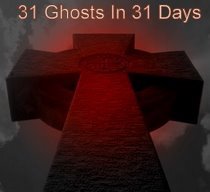Hubble images
Hubble Images - The funniest home videos are here
Look! Up in the Sky! The Very Best of Hubble
The very best images from the Hubble Space Telescope have been blended with music from the motion picture "Contact" to bring you this mind blowing interstellar experience.
Planet Earth is a Tiny, Tiny Object in Space
Do you know how tiny Earth is compared to other planets and stars? We are very very tiny! Earth is compared to Venus, Mars, Mercury and Pluto. Then to Jupiter, Saturn , Uranus and Neptune Then to the Sun. Then to Arcturus - the brightest star in the northen hemisphere, and other smaller stars - Pollux and Sirius. Our Sun is a tiny dot in the Milky Way! Earth is even smaller!
Labels:
earth,
solar system,
sun,
tiny,
universe
Amateur Astronomy for Beginners - Telescopes Part 1
The difference between refractors and reflectors and the importance of size.
Labels:
Amateur,
astronomy,
Beginnersre,
fractors,
reflectors
Gary Numan - Airlane: Trip Through the Universe
Random images from from and space: Moons, Planets, Galaxies, Nebulas, Star Clusters, etc. Set to "Airlane" by Gary Numan. The opening note is from "Films" also by Gary Numan.
Labels:
galaxies,
Gary NumanMoons,
Nebulas,
Planets,
Star Clusters
Hubblecast 05: Hubble finds ring of dark matter
An international team of astronomers using the NASA/ESA Hubble Space Telescope has discovered a ghostly ring of dark matter formed long ago during a colossal collision between two galaxy clusters. This is the first time that dark matter has been found with a distribution that differs substantially from the distribution of ordinary matter.
Labels:
dark matter,
Hubblecast
XMM-Newton Space Telescope
After launch from Kourou, French Guiana on 10 December 1999, the European Space Agency's X-ray Multi-Mirror satellite is the most powerful X-ray telescope ever placed in orbit. Scientists are sure the mission will help solve many cosmic mysteries, ranging from enigmatic black holes to the formation of galaxies.
Many celestial objects generate X-rays in extremely violent processes. But Earth's atmosphere blocks out these X-rays, messengers of what occurred in the distant past when stars were born or died, and clues to our future. Only by placing X-ray detectors in space can such sources be detected, pinpointed and studied in detail. XMM-Newton, the largest science satellite ever built in Europe, has an unprecedented sensitivity.
XMM-Newton carries three very advanced X-ray telescopes. They each contain 58 high-precision concentric mirrors, delicately nested to offer the largest collecting area possible to catch the elusive X-rays. These Mirror Modules allow XMM-Newton to detect millions of sources, far more than any previous X-ray mission.
Many celestial objects generate X-rays in extremely violent processes. But Earth's atmosphere blocks out these X-rays, messengers of what occurred in the distant past when stars were born or died, and clues to our future. Only by placing X-ray detectors in space can such sources be detected, pinpointed and studied in detail. XMM-Newton, the largest science satellite ever built in Europe, has an unprecedented sensitivity.
XMM-Newton carries three very advanced X-ray telescopes. They each contain 58 high-precision concentric mirrors, delicately nested to offer the largest collecting area possible to catch the elusive X-rays. These Mirror Modules allow XMM-Newton to detect millions of sources, far more than any previous X-ray mission.
Labels:
XMM-Newton Space Telescope
Hubble Finds New Class of Planets
Astronomers have identified worlds that circle their respective stars in less than a day, and in one case, 10 hours. Jorge Ribas reports.
Labels:
new planets
The Hubble Deep Field
In 2003, the Hubble Space Telescope took the image of a millennium, an image that shows our place in the universe. Anyone who understands what this image represents, is forever changed by it. It show how small we really are and how big the universe really is.Amazing stuff!
Labels:
hubble,
the universe
Space zoom-in attempt 1
Approaching Jupiter
Date: 02.03.1979
This is the original Voyager 'Blue Movie' (so named because it was built from Blue filter images). It records Voyager 1's approach during a period of over 60 Jupiter days. Notice the difference in speed and direction of the various zones of the atmosphere. The interaction of the atmospheric clouds and storms shows how dynamic the Jovian atmosphere is.
As Voyager 1 approached Jupiter in 1979, it took images of the planet at regular intervals. This sequence is made from 66 images taken once every Jupiter rotation period (about 10 hours). This time-lapse movie uses images taken every time Jupiter longitude 68W passed under the spacecraft. These images were acquired in the Blue filter from Jan. 6 to Feb. 3 1979. The spacecraft flew from 58 million kilometers to 31 million kilometers from Jupiter during that time.
Date: 02.03.1979
This is the original Voyager 'Blue Movie' (so named because it was built from Blue filter images). It records Voyager 1's approach during a period of over 60 Jupiter days. Notice the difference in speed and direction of the various zones of the atmosphere. The interaction of the atmospheric clouds and storms shows how dynamic the Jovian atmosphere is.
As Voyager 1 approached Jupiter in 1979, it took images of the planet at regular intervals. This sequence is made from 66 images taken once every Jupiter rotation period (about 10 hours). This time-lapse movie uses images taken every time Jupiter longitude 68W passed under the spacecraft. These images were acquired in the Blue filter from Jan. 6 to Feb. 3 1979. The spacecraft flew from 58 million kilometers to 31 million kilometers from Jupiter during that time.
Subscribe to:
Comments (Atom)




